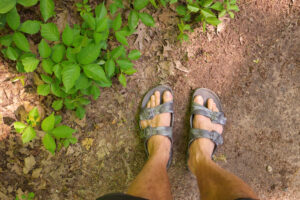July 31, 2024 | Black & Kletz Allergy

About half the adult population in the United States develops contact dermatitis after exposure to these plants. Approximately 10 to 50 million people in the U.S. suffer from this condition every year. Certain professions who work outdoors, such as construction workers, farmers, landscapers, and firefighters are at a higher risk to develop plant-induced contact dermatitis than other professions where workers are primarily based indoors. Individuals who have active lifestyles outdoors or who have a hobby or passion that involves the outdoors are also more prone to developing poison Ivy, poison oak and/or poison sumac.
On exposure to one of these plants, the sap oil urushiol penetrates the skin and cause inflammation. The uruahiol can also spread to different parts of the body by direct contact. Pets and other animals can also transfer the allergen from the plants to the human skin. In addition, contact with plant-exposed clothing or garden tools can also result in contact dermatitis.
Symptoms:
The symptoms of poison ivy, poison oak, and/or poison sumac typically begins with a reddish and itchy rash that develops over the exposed area of the skin approximately 1 to 2 days after the exposure. Note that the rash may take up to 2 weeks in some individuals to develop after the first exposure, however, as mentioned above, it typically begins within the first day or two. The rash is usually intensely itchy and may cause a burning sensation in some individuals. In severe cases, fluid-filled blisters may develop and they are usually arranged in linear streaks, a pattern that can be explained by the contact with a branch of leaves touching the skin. The symptoms usually increase in intensity over the next week and the whole episode gradually resolves after 2 to 3 weeks.
Management:
The whole body should be washed with soap and water as soon as possible after exposure to these plants. The oily urushiol should be removed from everywhere before it has a chance to get absorbed. Clothing and other items that were exposed to the plants should be thoroughly washed as well. It is also prudent to bathe any pet that was exposed.
Treatment:
- Wet compresses may help to reduce inflammation and pain.
- Soothing agents such as calamine lotion, zinc oxide, and/or oatmeal baths can reduce irritation and discomfort.
- Topical corticosteroid creams/ointments will help control inflammation and can reduce blistering and itching.
- If more than 20% of the body surface area is involved and/or in case of a severe rash over the face, hands, genitals, etc., systemic corticosteroids (e.g. oral prednisone) may be helpful.
- Antihistamines can offer some marginal relief from itching. First generation antihistamines are usually more effective but should not be used when one needs to be fully alert and awake as they may cause drowsiness and fatigue.
- Occasionally, antibiotics are necessary to treat secondary infections that can occur.
Prevention:
- Identifying and avoiding exposure to poison ivy, poison oak, and/or poison sumac is the only definitive way in preventing plant-induced contact dermatitis.
- Wearing long sleeves, long pants, boots, and gloves before gardening and other outdoor activities can reduce direct exposure to the plant oils.
- Barrier skin creams such as Ivy Block or IvyX applied over the skin before possible exposure may offer some additional protection.
The board certified allergy doctors at Black & Kletz Allergy have been diagnosing and treating poison ivy, poison oak, and poison sumac for more than 50 years. Black & Kletz Allergy has 3 convenient locations in the Washington, DC metro area with offices in Washington, DC, McLean, VA (Tysons Corner, VA), and Manassas, VA. We offer on-site parking at each location and the Washington, DC and McLean offices are Metro accessible. There is a free shuttle that runs between our McLean, VA office and the Spring Hill metro station on the silver line. Please call us today to make an appointment at the office of your choice. Alternatively, you can click Request an Appointment and we will respond within 24 hours by the next business day. The allergists at Black & Kletz Allergy pride themselves in delivering the highest quality allergy care in the Washington, DC metropolitan area in conjunction with providing excellent customer service in a welcoming and friendly environment.












